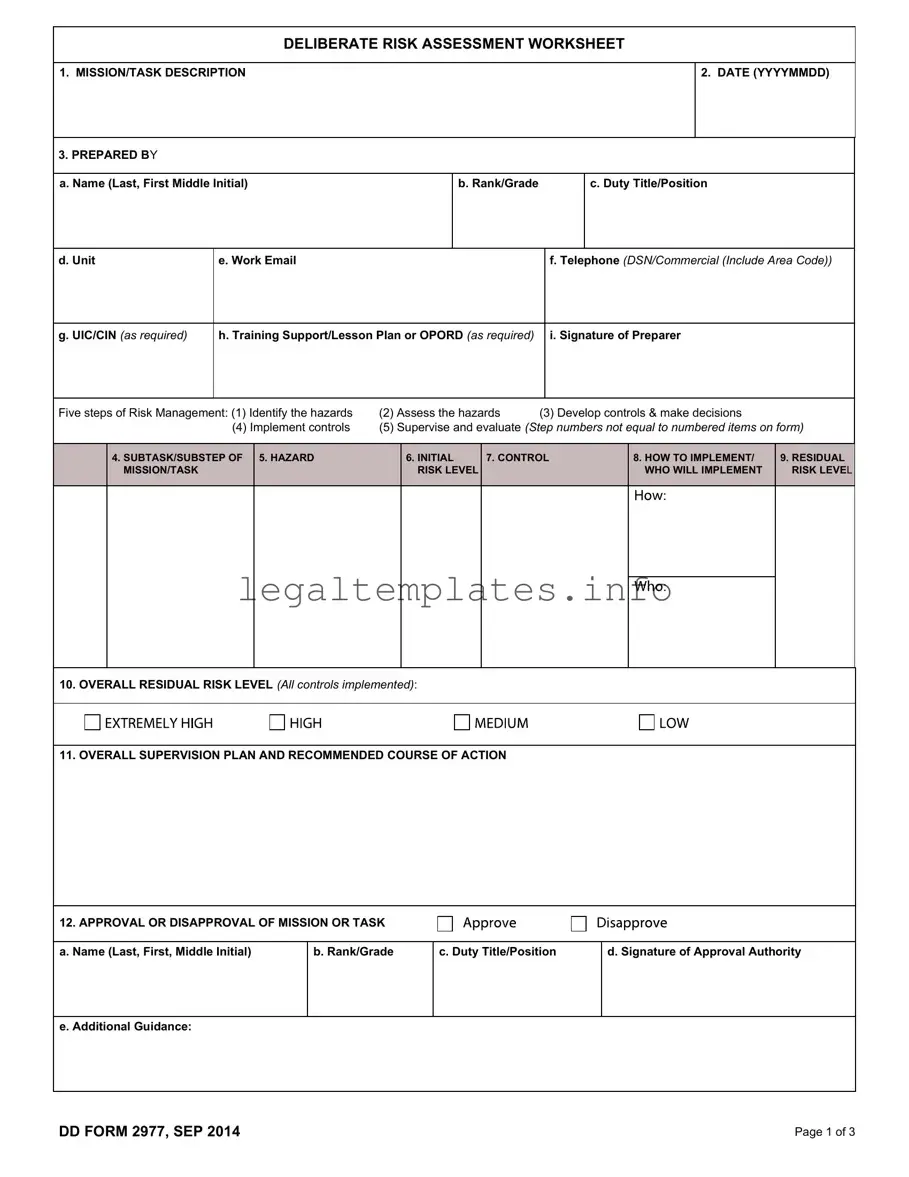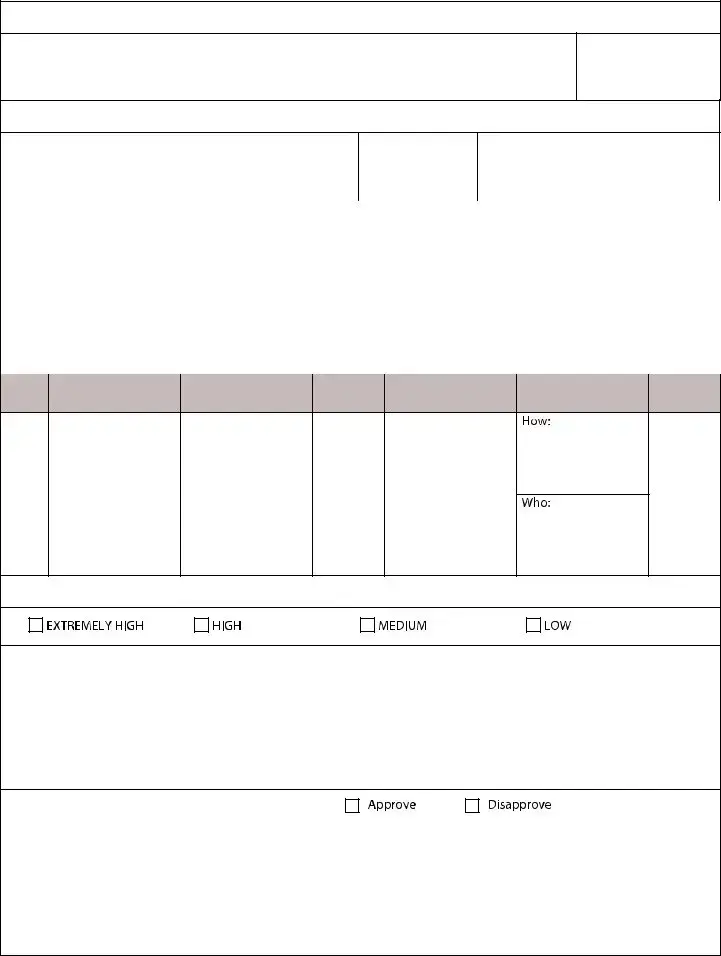What is a DD Form 2977?
The DD Form 2977, also known as the Deliberate Risk Assessment Worksheet, is a document used by the Department of Defense (DoD) for conducting a thorough risk management assessment. This form assists military planners in identifying and assessing hazards, developing and implementing controls to mitigate risks, and making informed decisions about military operations or training exercises to ensure safety and mission success.
Who needs to complete the DD Form 2977?
This form must be completed by any individual conducting a deliberate risk assessment for military operations or training exercises. This includes but is not limited to commanders, leaders, and planning staff involved in the preparation and execution of military tasks that may pose risks.
What are the steps of the risk management process included in the DD Form 2977?
The DD Form 2977 outlines a five-step process for risk management: (1) Identify the hazards, (2) Assess the hazards, (3) Develop controls and make decisions, (4) Implement controls, and (5) Supervise and evaluate. These steps are crucial for systematically addressing risks associated with military operations and tasks.
How do you determine the initial risk level on the DD Form 2977?
To determine the initial risk level, the form requires an assessment of both the probability and the severity of potential hazards associated with a task or operation. Utilizing the risk assessment matrix provided in the form, the assessor selects a risk level (Extremely High, High, Medium, or Low) based on the expected frequency (probability) and the expected consequence (severity) of the hazard occurring.
What is meant by "residual risk" on the DD Form 2977?
Residual risk refers to the level of risk that remains after controls have been implemented to mitigate initial risks. After applying the planned controls, the assessor must reevaluate the probability and severity of the hazard occurring. The resulting risk level, which may be lower than the initial risk but still present, is considered the residual risk. This helps decision-makers understand the effectiveness of the controls and any remaining risk before proceeding with the mission or task.
How is the DD Form 2977 approved?
The approval process for the DD Form 2977 involves submitting the completed risk assessment to the appropriate risk approval authority. This authority reviews the overall risk assessment, including the identified hazards, initial and residual risk levels, and the supervision plan. Based on this review, the mission or task is either approved or disapproved. Approval is contingent upon the authority's assessment that the risks are adequately managed and that the mission's benefits justify those risks.



